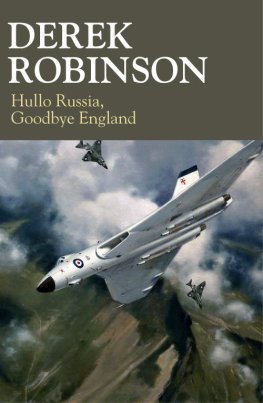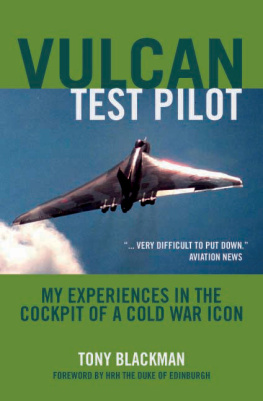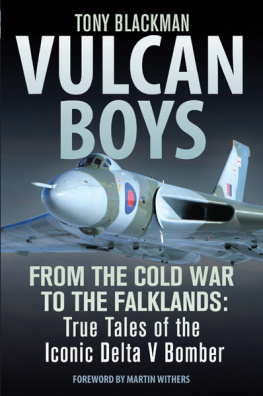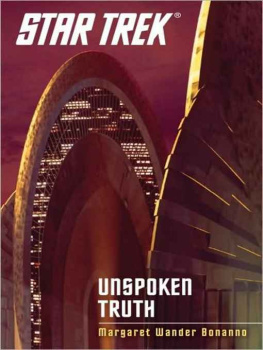
CONTENTS

Britains long history of innovative military aircraft design and construction has produced some truly outstanding designs. Often driven by the expediencies of war, classic aircraft such as the Spitfire and Lancaster have become familiar names in the nations vocabulary. It would be fair to say that it is these (and other) aircraft from the days of the Second World War that have become the most familiar icons. The decades which followed certainly produced a wider range of exciting and unusual aircraft that generated a great deal of attention whenever they emerged, but they inevitably faded into history as even more advanced and capable machines replaced them. However, one aircraft could perhaps be described as a true exception. Its unorthodox, graceful lines were somehow merged with a menacing stature belying its true purpose. Although designed for warfare, it captured the imagination and emotions of almost everyone who saw it. Built not for beauty, this sleek, shining machine was created to kill. It was a wholesale murderer, a true weapon of mass destruction.

Avro 698 prototype VX770 pictured over Hampshire en route to the Farnborough SBAC show. (BAE)
D uring the dark, austere years immediately after the Second World War the euphoria of wartime victory did not last for long. There was little to celebrate in Britain. Food rationing was still a daily source of misery for every household across the land and the government struggled to rebuild a nation that had been crippled both emotionally and financially. The war with Germany was over and the brutal war with Japan had been brought to a dramatic conclusion, but there was no sense of peace or security to comfort Britains long-suffering citizens while the country slowly began the task of rebuilding itself. A new threat had emerged and it held a menacing promise of more misery and more warfare. The Soviet Union might have been a wartime ally, but it quickly became obvious that Stalins friendship had been only a temporary convenience that had swiftly turned sour, and as the joy of Japans surrender slowly faded into history, Britain was faced with a future that often looked even more terrifying than the grim days of the Second World War. The Soviet Unions increasingly aggressive attitude could not be separated from the very clear knowledge that if Britain and her allies were forced into another military confrontation, such a war would not merely be a question of achieving victory. This time, the inevitable outcome would be complete devastation for both the victor and vanquished. Britain had entered the nuclear age.
It was against this background that the Vulcan bomber was created. British industrys output of fighting machines for the Royal Air Force which had begun as a result of Britains first conflict with Germany reached a peak of excellence during the Second World War. In addition to the creation of classic fighter aircraft such as the Spitfire and Hurricane, a whole series of bombers had been designed and manufactured, all of which were vital to Britains efforts to take the war back to skies over Germany. In this field the immortal Avro Lancaster represented the pinnacle of Britains technical expertise, but as the Second World War reached its conclusion, even the mighty Lancaster was already beginning to show signs of obsolescence. During the 1940s designs emerged with remarkable speed and by the time that the Second World War ended, America had already created the superlative Boeing B29 Superfortress, which had demonstrated its potential over Japan. However, with meagre resources and a stifling lack of forward thinking, Britains offensive capabilities diminished with astonishing speed. The Royal Air Force was destined to replace its Lancaster, Halifax and Stirling bombers with the Lincoln, an aircraft that was, in effect, little more than an improved version of the Lancaster. However, circumstances quickly shaped the RAFs future and the lumbering Lincoln was in fact the last of a distinguished line of piston-engined bombers. The jet age had dawned and it was inevitable that this new technology would enable the RAF to re-equip with fighters and bombers that would achieve speeds and altitudes almost beyond imagination just a few years previously. Indeed, the jet engine would ultimately lead to the creation of a completely new RAF bomber that would represent a seismic shift in technology and thinking, a radical new design that was so revolutionary and advanced that it often seemed like an impossible dream. But the dream was, in fact, a nightmare. Britains new bomber would be designed to perform only one mission against only one target. It would be tasked with the carriage and delivery of just one, deadly, atomic bomb.
To understand the reasons why and how the Vulcan bomber was created, it is important to understand the circumstances that prevailed at the time of the projects conception. Unlike any other British bombers that preceded it, the Vulcan and the V-force was inextricably linked to a specific weapon and one fundamental role. The aircraft and the weapon it was designed to carry were equal parts of one incredibly expensive project on which Britains very existence effectively relied.
Oddly, the full story of the Vulcan requires some knowledge of the complicated world of particle physics. The tale begins with Otto Frisch, an Austrian scientist who was engaged in studies at the Institute of Theoretical Physics in Copenhagen (hed been forced to leave Nazi Germany because of his nationality). He was invited to relocate to England in order to continue his molecular physics studies at the University of Birmingham. Having worked in Denmark under the leadership of fellow physicist Niels Bohr, he had established the basic principles of what became known as nuclear fission while spending a Christmas holiday with Lise Meitner (who happened to be his aunt), herself a respected scientist who had been conducting experiments with two other physicists, Otto Hahn and Fritz Strassman. Together, they had produced a detailed report, which had described how barium was created as a result of the collision of uranium nuclei and neutrons. They made a series of tests and with calculations based on the first report, Frisch and Meitner concluded that in order to have created barium, somewhere in the microscopic process the impact of a neutron upon a uranium atom must have actually elongated the shape of its nucleus. Nuclei contain protons that (because of their electrical charge) normally try to repel each other, but strong surface tension normally holds these protons together. Frisch and Meitner discovered that if the nucleus became elongated into a peanut shape, it ought to enable the electrical forces to overcome this surface tension, allowing the nucleus to split into two similarly sized portions. Frisch concluded that this must have been what had actually happened and he described this theory as nuclear fission. However, this in itself was not the most important point. He also calculated that the mass of the two halves created by the fission process was slightly less than that of the original nucleus, and this tiny shortfall of mass therefore represented (if Einsteins theories were correct) an output of energy produced during the creation of the two fragments. Frisch and Meitner calculated that even though the actual amount of energy involved in this fission process would obviously be only microscopic in size, in proportional terms it would be surprisingly large. They had discovered the fundamentals of nuclear power.
Next page













